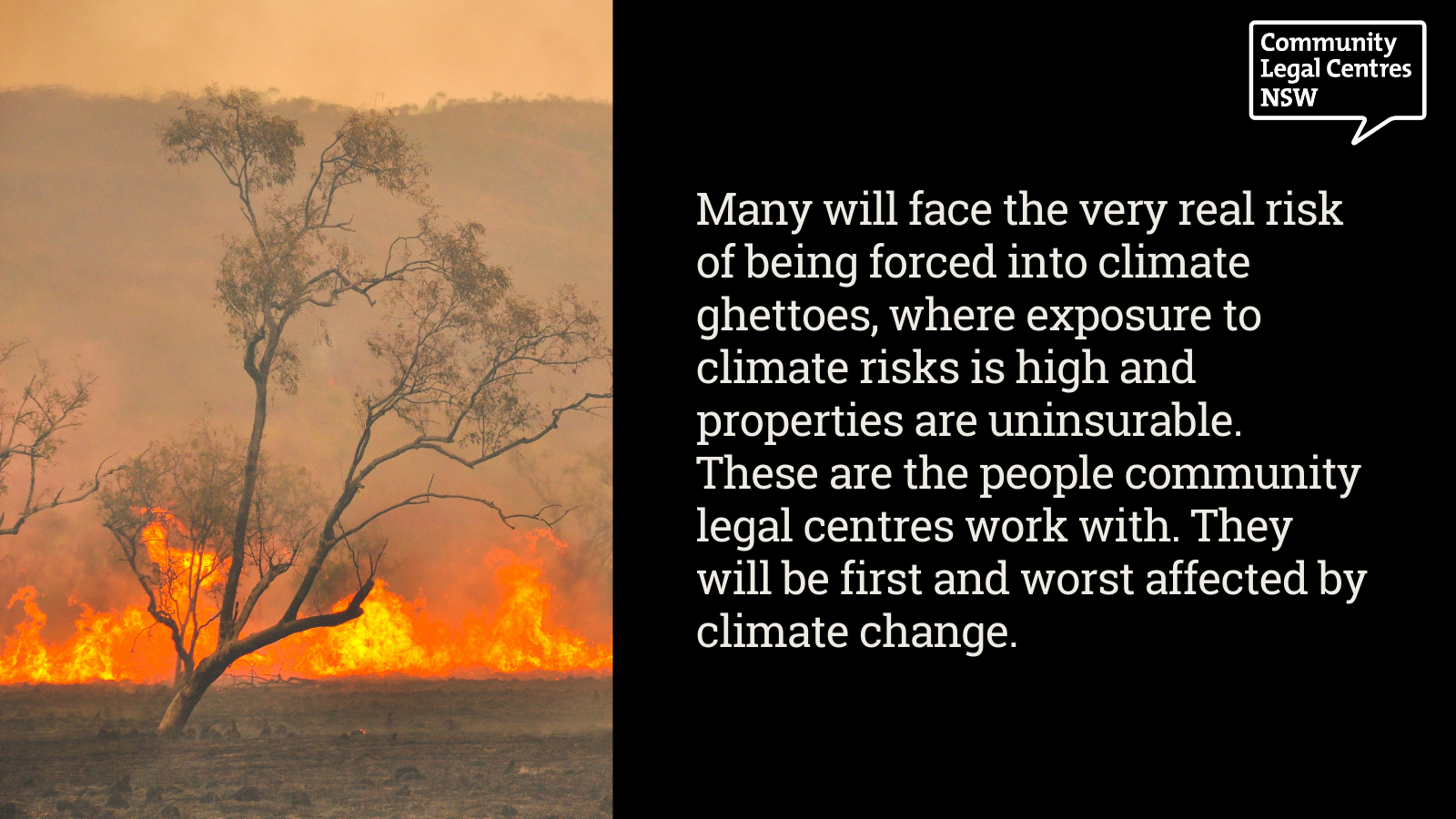At the opening plenary of our recent state conference (Back to the Future) a frank and fearless panel – Karl Mallon (Climate Risk), Belinda Rayment (Environmental Defenders Office), Alex Kelly (Financial Rights Legal Centre) and Julia Davis (facilitating) – painted a grim picture of the looming financial and social impacts the climate crisis will have on our communities. Thankfully, they also gave us a clear blueprint for action to build resilience across the communities we’re part of and for advocacy to ensure governments take strong action to reduce climate impacts.
Below, you’ll find a summary of the key takeaways, which picks up on some of the issues covered in the follow-up conference session, ‘Climate justice and resilience: learning to expect the unexpected.’
As the climate crisis worsens the frequency and severity of natural disasters like floods and bushfires, insurance premiums will continue to soar – particularly for people who live in identified climate ‘hot spots,’ and areas already exposed to heightened disaster risks. As premiums become unaffordable, banks will start to limit mortgages on high-risk properties.
In the meantime, lenders aren’t currently obliged to disclose climate risks to people applying for mortgages in high-risk regions and communities.
As a result, we’ll see further increases in the number of homeowners who are uninsured or under-insured, as well as non-homeowners who are locked out of the market because the properties they own or want to buy are uninsurable. These people will be amongst those most at risk – economically and otherwise – when the next flood or fire or storm or heatwave hits.
People experiencing financial hardship and other forms of disadvantage – including renters, social housing tenants, people who live in caravan parks and other high-risk locations, or people who are homeless – often have very little choice over where they live and the condition of properties they live in, or the resources to adapt to increasing climate risks. Many will face the very real risk of being forced into climate ghettoes, where exposure to climate risks is high and properties are uninsurable. These are the people community legal centres work with. They will be first and worst affected by climate change.
Generalist and specialist centres working in regions hit heavily by the 2020 Black Summer bushfires and the 2021 floods are seeing first-hand the devastating and ongoing social and legal impacts caused by these rolling, climate-driven disasters on people and communities across NSW.
The argument that acting on climate change is not core to our business no longer holds (if it ever did). Community legal centres must stand with other community-based organisations and groups and take a proactive role in:
- Educating disaster-prone communities about the climate risks they face and the legal problems they can cause
- Pushing for greater investment in building community resilience by local and state government bodies
- Advocating for state and federal governments to take strong action on climate change to reduce carbon emissions and mitigate climate risks.
Actions community legal centres can take at the local level include:
- Encouraging and facilitating community-based conversations about climate change and local climate risks and impacts, including through community legal education. Using the language of ‘extreme weather’ and ‘natural disasters’ can be a useful strategy to foster positive engagement early on.
- Supporting people and communities to identify as ‘climate victims’ (for example if they’ve experienced domestic violence in the aftermath of a disaster or been forced into homelessness because their home was uninsured or incorrectly insured
- Capturing case studies of the lived experiences of ‘climate victims’ in our communities.
- Building organisational resilience and business continuity plans, using tools like ACOSS Resilient Community Organisations (designed specifically for community-based organisations), the Australian Red Cross’s RediCommunities Guide to Community-Led Resilience for Emergencies, and the NSW Government’s Resilience NSW website and resources.
Advocacy actions community legal centres can be part of at the state and federal level, include:
- Supporting calls for climate change legislation in NSW that explicitly recognises the impacts of the climate crisis and implements mitigation strategies in environmental planning
- Calling on the Federal Government to develop and implement policies to mitigate climate risks, including a carbon tax and a disaster levy on fossil fuel producers
- Urging all levels of government to develop ‘just transition’ plans for communities likely to be most heavily impacted by the transition to a zero-carbon future
- Addressing parliamentary inquiries about climate impacts and adaptation measures and sharing the stories of climate-impacted clients.
These are tough conversations. But we can’t put them off any longer. We’ve already started planning the next instalment for the September Quarterly and will look forward to seeing you there.

